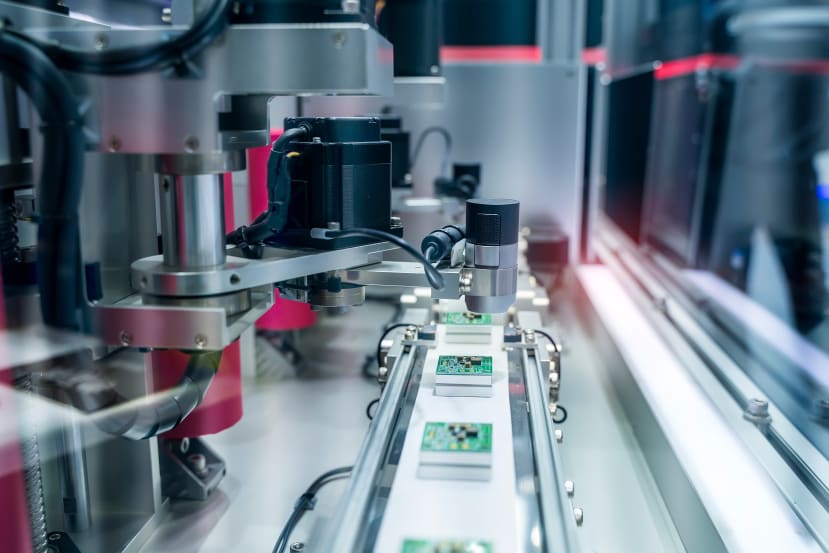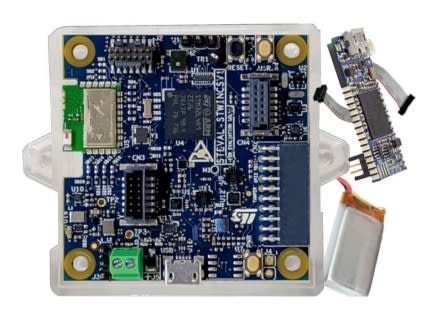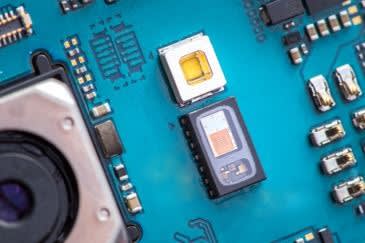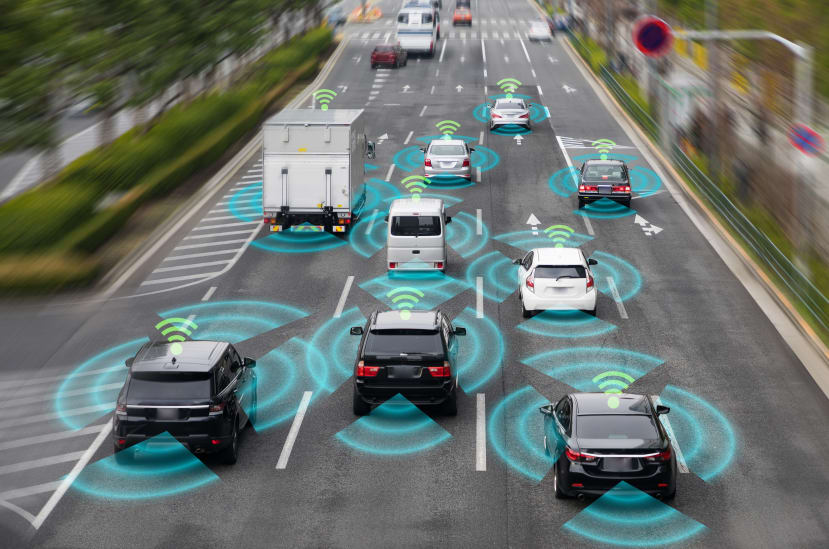Semiconductor Manufacturers are driving Industrial Sensing
Follow articleHow do you feel about this article? Help us to provide better content for you.
Thank you! Your feedback has been received.
There was a problem submitting your feedback, please try again later.
What do you think of this article?
Industry 4.0 has made a significant impact on the electronics industry. A part of the broader fourth industrial revolution bringing digital principles to the world of manufacturing. With this, revenue from semiconductor sensing devices has increased, when coupled with continuing advancements in sensor technology and the emergence of 5G, AI and Machine Learning, semiconductor manufacturers look set to continue to benefit from a wider scale implementation of Industry 4.0 via the IIoT.
There are many drivers to support this, the continued development of consumables such as smartwatches and wearables, but ultimately the area for compound growth will come from the industrial markets, such as medical, health care, automotive & insurance, manufacturing and energy utility management. The predicted market growth for industrial sensing is 7% until 2026. Source: Global Market Insights, Inc.
The birth of Industry 4.0, which was initially formed as a high-tech strategy by the German government in 2011, came at a time when the internet of things (IoT) concept was also in its infancy. Today, the founding tenets of Industry 4.0 have found adoption around the globe, and Industry 4.0 and the industrial application of the internet of things (IIoT) are well-suited.
Two of the founding principles of Industry 4.0 are interconnection and information transparency. The IIoT is at the very heart of interconnection. The basic premise behind interconnection is to be able to digitally link manufacturing and production assets together via monitoring, control and analysis applications. The interconnection meant that any item of industrial automation or process equipment could provide data in real-time about its operational status and performance. Interconnection is also a two-way communication, allowing control of machinery and plant automatically or through human intervention. The collection of data across a whole production facility creates masses of data points, which when aggregated would yield the critical manufacturing management metrics of operational efficiency (OE) and overall equipment effectiveness (OEE) with ease.
Keeping any factory or production process running, with high levels of efficiency and effectiveness depends on reliable machinery. Unfortunately, anything mechanical tends to have parts that wear or fail over time. For a linear production process, the failure of one item of machinery can stop the whole factory, so over the years formal maintain, repair, and operate (MRO) regimes have become necessary to ensure production equipment keeps running. Thanks to the IIoT, implementation of a preventive maintenance routine is possible that gives plant management early warning to potential equipment failures and to be able to schedule maintenance intervention for when it is operationally most effective.
Acquisition of the critical data required for both operational and maintenance purposes comes from sensors deployed on production assets. This is where the semiconductor manufacturers come into force, the sensor development they have undertaken can be used to detect the common key indicators of performance levels through signature analysis. Sensors can detect vibration, temperature, humidity, sound and a whole host of other environmental factors. Many of these can be used to determine the operation life of assets, but more importantly flag any issues that arise before unexpected costly breakdown occurs.
Also, inspection sensors such as camera sensors function as inputs to image recognition systems that check, for example, if a brand label affixed to a bottle does not conform to correct placement tolerances.
STMicroelectronics is helping customers to evaluate predictive maintenance implementation with the release of their STWIN prototyping evaluation board (193-9794) for IIoT applications. This ultimately allows the user to deliver the benefits of condition monitoring on key critical industrial assets.
STWIN from STMicroelectronics
There is a wide range of different sensor technologies in use today, from simple discrete thermistors to detect temperature, to complex micro-electromechanical (MEMS) sensors used to detect acceleration forces. The vast majority of sensor outputs today are processed into the digital domain within the sensor and then transmitted across wired or wireless networks to the host control and monitoring system.
For more on MEMS and predictive maintenance see our exclusive interview with STMicroelectronics, plus this interesting article from DesignSpark member Redstone.
Technology innovations will drive Industry 5.0
Before many manufacturing organisations have even completed their Industry 4.0 deployments, the industry has started talking about Industry 5.0. Industry 5.0 offers the potential to bring the human back into the manufacturing loop, a notable omission in Industry 4.0.
Implementing Industry 4.0 hasn't been without its challenges. Factory floor space is at a premium across the world, so many manufacturing operations found themselves having to squeeze more and more electronics-based systems into existing control cabinets. In most cases, these were already nearly full, so packing more tech into a space-constrained cabinet required more innovation. Established industrial automation equipment manufacturers needed to make their PLCs and control cards more functionally dense, more power-efficient, and slimmer. Thankfully, the semiconductor industry provided the answers with innovations that offered higher levels of functional integration; for example, a four-channel analogue-to-digital converter (ADC) complete with a low noise isolated DC/DC converter compared to a previous single-channel ADC. Intelligent power management ICs, and driving higher power conversion efficiencies by using wide-bandgap process technologies, reduce the amount of waste heat requiring dissipation, further reducing overall system size.
For Industry 5.0, innovations from the semiconductor industry will continue to be in demand. One aspect of Industry 5.0 is that for some processes, robots will work alongside skilled human counterparts. There has been a lot of research into the use of collaborative robots and how they need to interact with humans nearby. Safety barriers usually surround industrial robots to prevent accidents; however, to be productive cobots will need to work beside humans, introducing more sensing requirements.
Another lesson learnt from Industry 4.0 and its use of IIoT centres around the amount of data transmitted, latency, and cloud-compute capabilities. Many sensors do not include any control element; they send data to the production management system at a set frequency. Aggregated together with hundreds and potentially thousands of sensors in a single site, this can represent a significant data bandwidth requirement. Also, the communications node-cloud-control latency involved in receiving sensor data to taking action can be substantial, removing the possibility of cloud-based control for some tasks. New types of sensors need to not only sense but also infer a control action. Likewise, local gateway aggregators could have a degree of devolved autonomy passed to them to control specific tasks within predefined bounds.
The semiconductor industry is responding with low power microcontrollers that include sensing elements and enough compute resource to run task-specific artificial intelligence algorithms. These devices contain a computer hardware architecture optimised for inference at the edge. Sensors are becoming more intelligent, being able to predict, for example, if a human's hand might be within the path of the cobot's intended movement. Another example is using a machine learning algorithm to listen to the output from an audio sensor mounted within a motor housing to detect early signs of bearing wear. To discover more about machine learning in sensors, data collection and solutions visit STMicroelectronics.
Constant innovation
The industrial sensing market has changed a lot since the early days of the first silicon-based sensors in the mid-1970s. Innovation continues to meet the demands of the fourth and fifth industrial revolutions and the ever-evolving internet of things, which now encompass a lot more than just factories. The advent of smart cities, smart homes, and intelligent buildings need sensor technologies too. Many of the sensor innovations for Industry 5.0 are already finding application in other technology-oriented markets, an excellent example of which is the automotive industry. The rapid deployment of advanced driver assistance systems (ADAS) in new vehicle models, together with the development of electric vehicles and semi- and fully-autonomous cars, have many sensor application requirements in common with industrial systems.
Here you can read more on the applications for automotive from TE Connectivity.
Our rapidly changing environment together with technological developments is giving rise to the connected philosophy of Industry 4.0 and beyond. The ability to act on data gathered from sensors cuts across all aspects of our life, from consumables and wearables to healthcare and industry. The realisation of the founding principles of 4th (and 5th) industrial revolution is attributed to the growing adoption of industrial automation. With this, the part that semiconductor manufacturers play in the world of industrial sensing is only set to grow.





